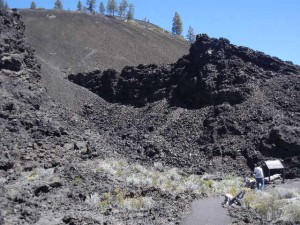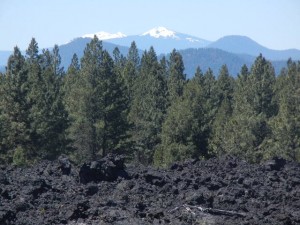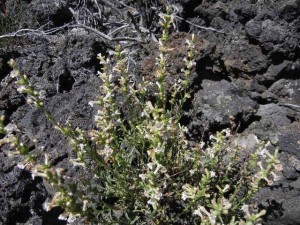18 Jun: Traveling north through the Oregon section of the Cascade Range, we were treated to good views of several snow-capped volcanic peaks. Whereas California’s Sierra Nevada Mountains are “intrusive” formations (where magma cooled below the earth’s surface slowly, hardening into large-grained rocks like granite that were later exposed by erosion of the overlying rocks), the younger Cascade range consists of “extrusive” formations (created when magma reached the surface to be expelled by volcanos to cool quickly as lava, cinders, and ash deposited on top of the earth’s crust). Volcanic peaks we had seen so far included Lassen Peak, Mt. Shasta, Mt. McLaughlin, the Mt. Mazama caldera at Crater Lake, Mt. Bailey, and Mt. Thielsen. Today, driving north through the relatively flat high desert of central Oregon, we saw several more: Mt. Bachelor, Broken Top, the Three Sisters (South, Middle, and North), Mt. Washington, Three-Fingered Jack, Mt. Jefferson, and Mt. Hood.
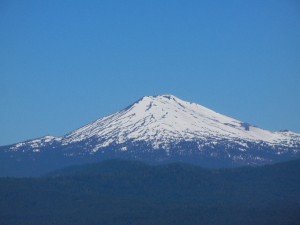
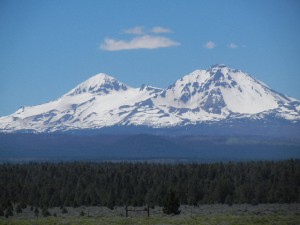
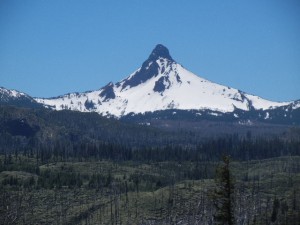
We spent about three hours at the Lava Lands visitor center in the northern part of Newberry National Volcanic Monument. Newberry Volcano is one of the largest volcanos in North America, with its flows covering an area nearly as large as Rhode Island. Its many eruptions have occurred throughout the last 400,000 years, most recently 1,300 years ago. The video and exhibits at the visitor center, the view from the Lava Butte cinder cone, and the Molten Land interpretive trail improved our understanding of the volcanic history of the Cascade Range. We didn’t have enough time to investigate other sections of this National Monument, but made a mental note to do so on another trip.
